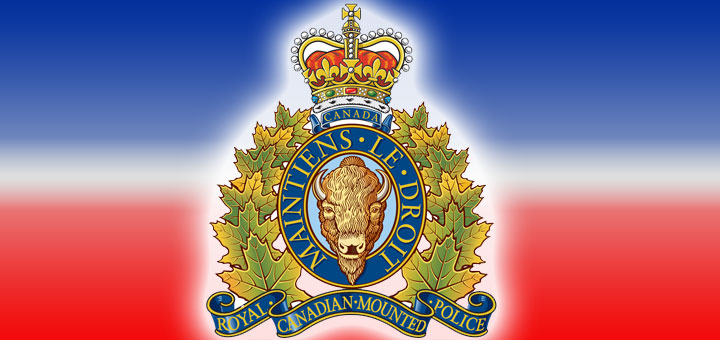Canola seeding systems analyzed in Farming Smarter study
Heather Cameron,
Local Journalism Initiative Reporter
The 2024 Farming Smarter Conference held recently at the Sandman Signature Lethbridge Lodge involved Carlo Van Herk from Farming Smarter giving a presentation titled Canola Chronicles: Testing Seeding Systems, which showed how he led the Natural Sciences and Engineering Research Council (NSERC) strip till canola project.
Van Herk said that he was hired by Lethbridge College to work at Farming Smarter on this trial and it was a threeyear trial that involved four different locations across southern Alberta, which made for a total of 12 site years’ worth of data. Out of those 12 sites, Van Herk said, there were 576 plots, 26,000 plants counted, and almost half a million canola pods. Ultimately, Van Herk said, 1,800 different photos were taken of the trial.
“Why would we research planters and tillage?” asked Van Herk. “Residue management is an issue, especially when we are dealing with a small seed such as canola, and we’re seeding after a high yielding wheat crop, leaving lots of residue behind on the soil, the higher residue there is a warming up of the soil as well as the drying out of the soil in the spring. It also can cause bridging during seeding, which results in poor soil to seed contact. One way to fix that is through intensive tillage. That brings in a different question where that results in lowering organic matter in fields and causes wind erosion and water erosion, which results in losing topsoil. There has also been an increased use of wide row planters in seeding canola. Through very precise work they have been adopted using canola. However, there has not been a lot of research done on wide row planters in canola. Finally, there has been an increase in demand for canola.”
Van Herk says that putting this all together was the next logical step of research in area of production of canola.
The study, Van Herk said, aimed to test the efficiency now of management practices including strip tillage as well as precision planting of canola to find the best management practice which will maximize yield and quality.
In the experiments, Van Herk said, there were two different sites across Southern Alberta. In this study they had both dry land and irrigated sites, so that made for a total of four trials each year, and they had made up a 12-treatment trial consisting of three tillage treatments and four seeding treatments. Van Herk then used slides to demonstrate how the experiments progressed and the measurements that were taken as the trial progressed.
“We took an array of different measurements in this trial,” said Van Herk. “Everything from plant emergence through plant counts, we took canopy closure, factional, green canopy closure measurements. We did days to flower, starting days to flower, ending days to maturity. We took weed ratings; we took soil moisture and soil temperature measurements as well. And of course, we also took yield as well as yield parameters.”
In presenting the results, Van Herk began with seeding systems at plant density and reported a 20 per cent increase in plant emergence compared to the disc hoe drills (which are metal discs that cut into the soil), a 20 per cent increase on the precision planter compared to our disc hoe drills, and under irrigated systems, a 22 per cent increase compared to the three air drill treatments. The treatments are all statistically significant, Van Herk said.
When looking at canopy closure, Van Herk said, there is no significant difference under the dry line systems with zero. However, Van Herk said, under irrigated systems, the spreader is presented as being the lowest with canopy closure. The narrow knife, Van Herk said, had a 22 per cent increase compared to the spreader while the disc hoe drills had a 43 per cent increase, and the precision planter had an 85 per cent increase in canopy closure. This, Van Herk said, was measured at four to five weeks after seeding.
In terms of yield, Van Herk said, under dryland systems, the disc hoe (21 per cent) gave a greater yield compared to the precision planter, and this was significant in irrigated systems. There was also a 15 per cent increase in the disc hoe drills compared to precision planter and a seven to eight increase for the spreader in the narrow knife, Van Herk said.
Van Herk also spoke on tillage and highlighted that there was a slight increase in the dry land for no-till as was expected due to greater moisture conservation. However, Van Herk said, when they looked at the yield under the dry land systems, they saw a 22 per cent increase in yield for the no-till compared to the full till and they saw a four per cent increase in yield in the strip till compared to the full till in their irrigated systems.
Van Herk said that they also measured yield parameters and what that means is that prior to harvest, they sampled five plants from each plot and would count the number of branches on each plant, they would count the number of pods on each plant where it comes at almost half a million pod counts, they would count the number of seeds in five pods, and then after harvest, they would do a total kernel weight, a per cent oil, as well as a green seed.
Van Herk used charts to explain that starting with the yield quality, they saw a slight increase in oil per centage and the precision planter and the spreader being the lowest. The chart, Van Herk said, showed a big jump in increase of total green seed on the spreader, but also showed that the total amount of green seed was still below the two per cent that would dock your canola from a number one grade canola.
“When we looked at the yield parameters, we looked at the branch counts, the pod counts and the seed counts,” said Van Herk. “None of the results were statistically significant, but there were some numerical differences, and I want to focus on the pod counts. We can see the precision planter had approximately 20 less pods per plant compared to the disc hoe drills, and this could be a great indicator as to why the yield was lower in the precision planter compared to the disc hoe drills. If you look back at the other parameters, we would see also a decrease in branch counts and a slight decrease in the seed counts. I mentioned we measured soil moisture. This was done through the use of neutron probes where we insert a probe into the soil in the seed row up to the depth of one meter, and we’d measure the soil moisture four times throughout the season. We would measure up to six different depths and we could measure the total quantity of water in the soil.”
Van Herk said that they also did soil temperature measurements.
“We had these tiny little thermochron eye button temperature loggers, and we’d buried them in the soil at the depth of the seed and we would place them in the soil directly after tillage or strip tillage, and we’d measure the soil temperature up to approximately emergence of the plants,” said Van Herk. “The results were as we expected, when you look at the average temperature over the year. I included 2020, 2021, and 2022. Overall, the average temperature for the full till was the highest throughout the year and the no-till was the lowest with strip tillage being somewhere in the middle, just as we expected. However, it is key to note that the full tillage plots also had a colder lower minimum as they had a larger range due to the more breathable soils where the no-till was more steady temperature throughout the spring.”
A few other measurements were taken, Van Herk said, including weed ratings and there was significance in the amount of weeds in the plots, but there was a slight increase in weeds in the no-till and a slight decrease for the full till; the strip tillage was right in the middle. Van Herk stated that they also took days to flower start and maturity ratings, and there was no statistical significance in those numbers either. However, Van Herk says, there was a slight numerical increase for the planter plots to flower one day before the disc hoe drill plots. On top of all that, Van Herk said, there was no statistical or numerical difference for yield parameters when they compared to tillage shapes.
Out of the data collected, Van Herk stated, the disc hoe drills consistently yielded the highest and the planter consistently yielded the lowest, but the planter was the most consistent over the years, meaning the yield varied the least depending on all sites and all locations and all years.
“This speaks highly of the planter in the fact that it has a very good job of doing precise and concise work no matter what the environment or the conditions are compared to the other seeding methods, which varied depending on conditions and environments,” said Van Herk. “However, the planter did yield the lowest, and this would be due to the fact that it was a wider row facing the planter, had increased plant emergence, which means even more plants in each seed row competing for the same amount of soil moisture and nutrients. In the end, decrease in yield as you can see in the yield parameters where the planter had lower branches and less pods per plants. So if you are planning on using a wide row planter for your canola this spring, you might want to park your planter this spring and just use your air drill. When we look at the tillage results, the strip till on the dry land yielded in the middle just as we expected, and for most of the measurements we took, the strip tillage was right in the middle between the no-till and the full till under irrigation. However, there was no immediate effect of tillage. This is really the best result we could have asked for, which indicates that adopting a conservational tillage or even a no tillage practice under area irrigated systems will not decrease your yield. This way, there is the option of protecting your soils, protecting from wind and water erosion as well.”
Van Herk then stated that in terms of what’s next for planters and tillage, Farming Smarter has already applied for two different trials. One of the trials, Van Herk says, involves placements of fertilizer with strip tillage in irrigated canola systems, as well as the use of precision planting to increase pulse agronomy. Another area of interest, Van Herk says, would be narrow row planters.
Heather Cameron,
Local Journalism Initiative Reporter
The Taber Times






